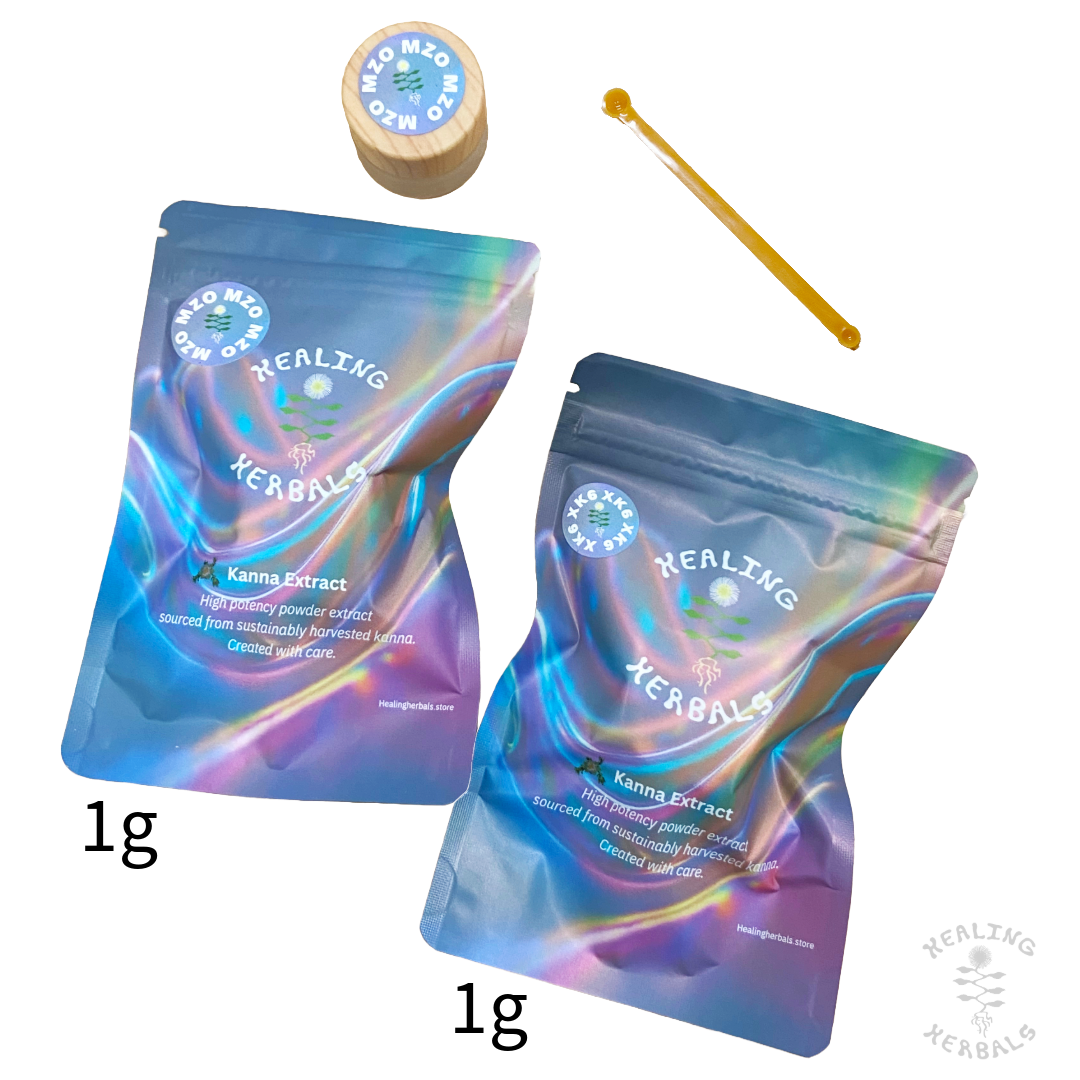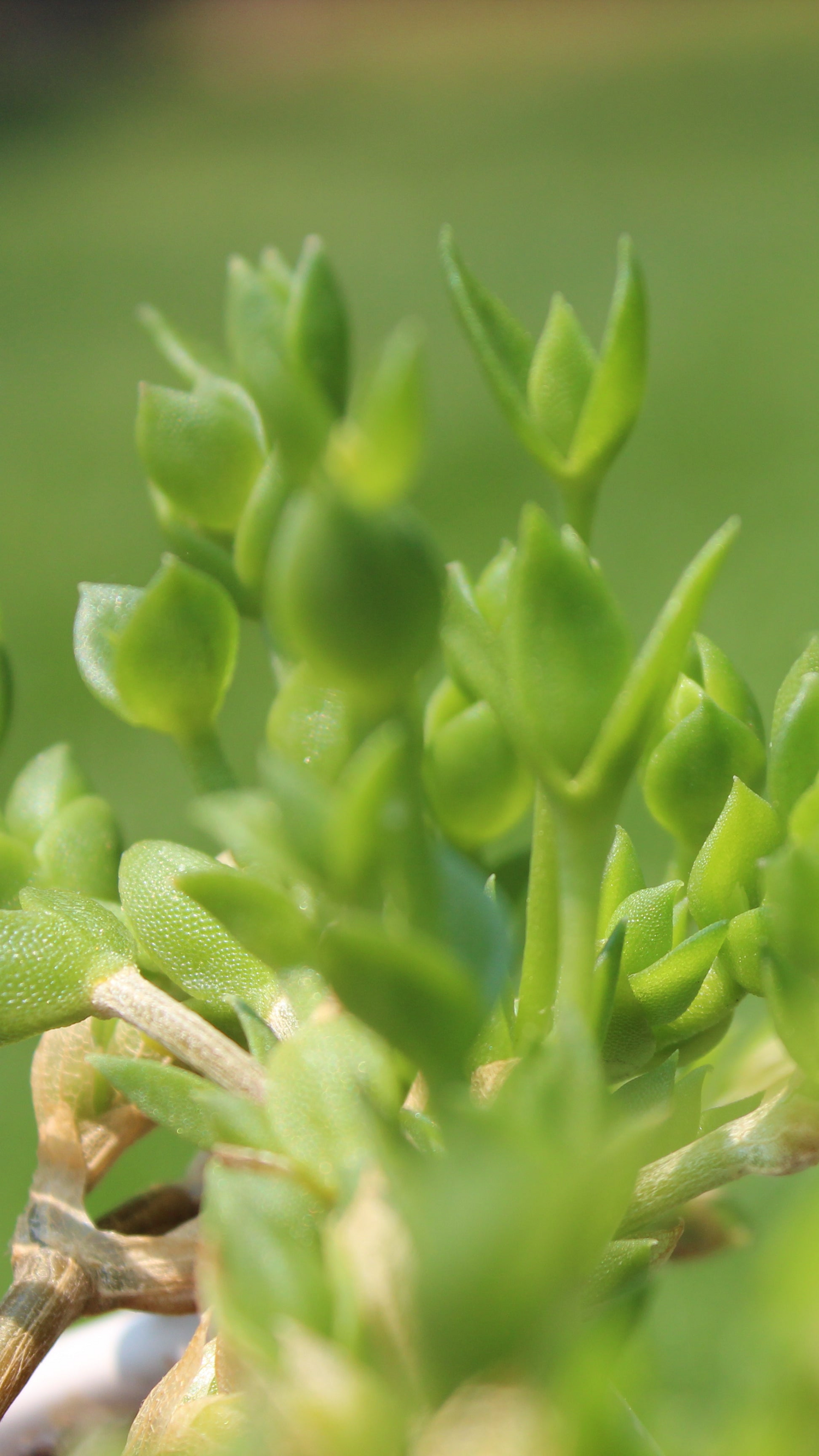
Healing Herbals
Kanna Extract MIP3 Powder 5% Active Alkaloids
Kanna Extract MIP3 Powder 5% Active Alkaloids
Couldn't load pickup availability
What is Kanna?
What is Kanna?
Kanna (Sceletium Tortuosum) is a flowering succulent plant native to South Africa. Kanna has been enjoyed for generations. This Kanna Extract has been specially formulated for higher concentrations of mesembrine- kannas most abundant and most sought after compound.
How to use
How to use
Healing Herbals Kanna Extract comes in a glass jar, with a small scooper and desiccant for ease of enjoyment. Every extract is unique, and best enjoyed with friends.
Safety & Testing
Safety & Testing
Healing Herbals Store is commited to quality kanna, extracted and perfected to ensure premium plant based alkaloids suspended on a mannitol substrate to ensure a consistent, high-quality & compliant product.
Kanna Extract MIP3 Powder 5% Active Alkaloids Mesembrine-dominant
Product Description: MIP3 is a mesembrine-dominant kanna extract with a standardized alkaloid profile, offering a balanced composition of the active compounds found in Sceletium tortuosum and Sceletium expansum.
Background: Kanna has a long history of traditional use in South Africa, where it was prepared through chewing, fermenting, or brewing. Modern extraction techniques now allow for refined alkaloid profiles and consistent standardization.
Key Features:
-
Optimized Formula – Contains a precise blend of alkaloids with a focus on mesembrine.
-
Potent and Standardized – ±5.4% total alkaloids, carefully measured for consistency.
-
Fully Soluble – Easily dissolves for versatile use.
- Convenient Dosing – Each purchase includes a 5mg/15mg measuring spoon.
Alkaloid Profile:
-
Total Alkaloids: ±5.4%
- Mesembrine: ±3.5%
Breakdown:
-
Mesembrine – ±60%
-
Mesembrenone – ±20%
- Δ7-Mesembrenone – ±15%
Suggested Use: Dosage 5mg–15mg per use. Start low to gauge individual response. Precision spoon included for accurate measurement.
Composition and Solubility:
-
Extract Type: Mesembrine-dominant solvent extract of a tortuosum/expansum cross
-
Substrate: Mannitol (for stability and consistency)
- Solubility: Fully soluble
Comparison: MIP3 is similar to MT55 but with slightly lower mesembrine levels and looser standardization tolerances, making it a flexible alternative while still offering strong potency.
FDA Disclaimer: These statements have not been evaluated or approved by the U.S. Food and Drug Administration (FDA). This product is not intended to diagnose, treat, cure, or prevent any disease. Consult a qualified healthcare professional before use, especially if you are pregnant, nursing, taking medications, or have a medical condition.
Share


Similar to the MT55 but maybe a little more calming, they are both great, cant go wrong with either one.
I love the kana that thees people have made. the kana has lab testing and is truly a good product. Shout out to the OG creators of this business. Alot of theys herbs are great for harm reduction and mentle health disorders, not to mention that its all natural. It shipped fast and it is a great mixer with other goodies. It gives you a lot of eforia and energy. I do wish that I bought a stronger dose and that I bought more. But other than that big shout out to healing herbals

Kanna & Quality
Healing Herbals commitment extends through sustainable and ethical sourcing of Sceletium tortuosum. We ensure that our plant material is organically grown, without the use of synthetic chemicals, and sourced either from well-managed farms or sustainably maintained wild ecosystems on private lands.
In alignment with our ethical practices our main suppliers participate in fair sharing agreements with the indigenous San and Khoikhoi communities including the South African San Council. These are the traditional knowledge holders of Sceletium. Additionally our suppliers are authorized by the Western Province Department of Cape Nature to distribute and export Sceletium globally

History of Kanna
This revered herb, indigenous to South Africa, has played a significant role in the lives of the local people, particularly the Khoikhoi and the San tribes, since prehistoric times. These tribes, initially hunter-gatherers, used Kanna for various purposes including relief from thirst and hunger, to combat fatigue, and for social and spiritual purposes. They had a profound connection with the plant, associating it with the sacred eland antelope and referring to it by the same name: 'Kanna'.
The first isolation of an alkaloid from Sceletium tortuosum was in 1898 by Meiring, who called it mesembrine. This discovery led to a deeper understanding of the plant's chemical composition, though its exact composition remains elusive.
Kanna's long-standing history reflects its significance in South African culture and its evolving role in global herbal medicine and recreational use. From its traditional roots to modern applications, Kanna has remained a plant of great interest and value.


